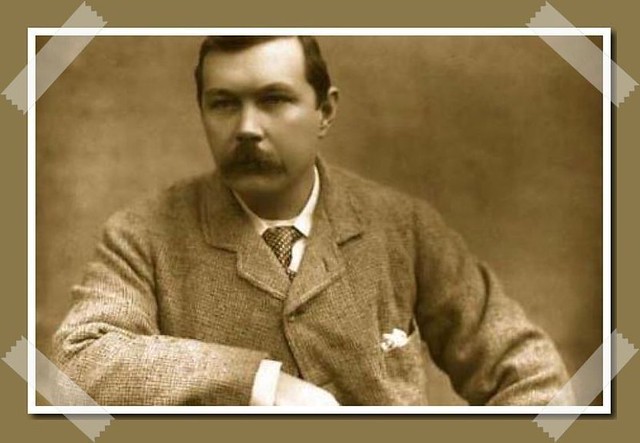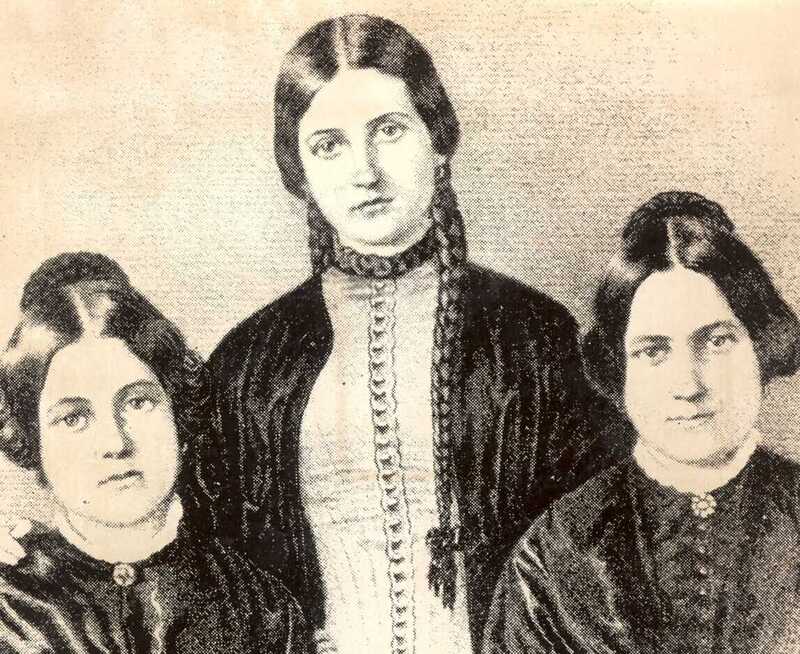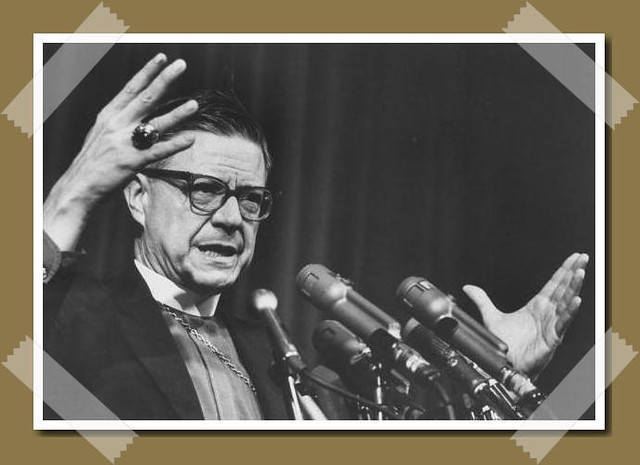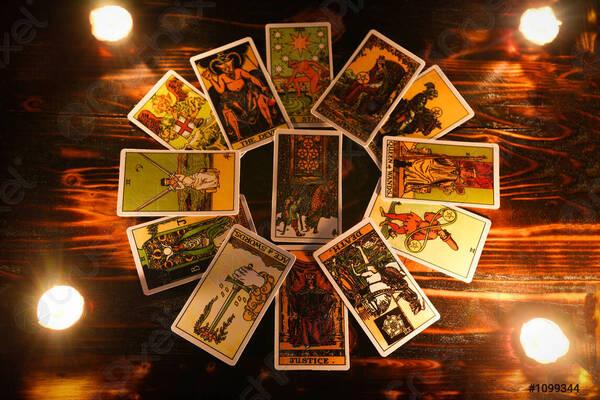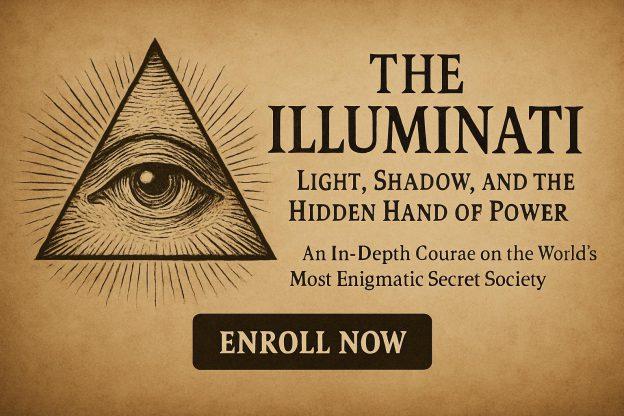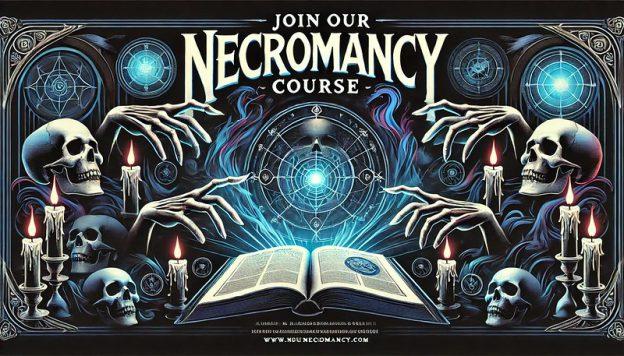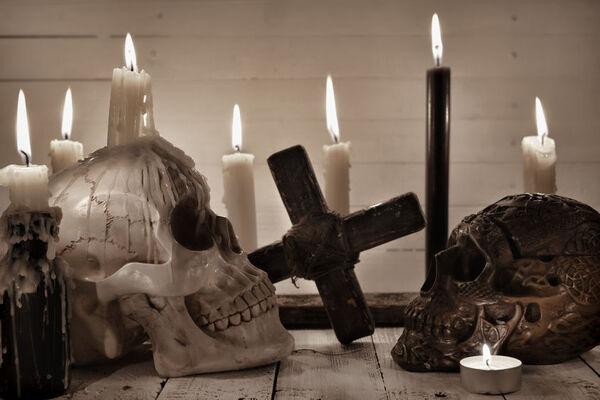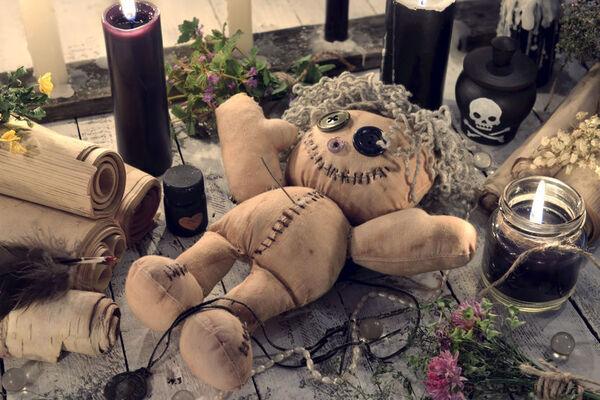SPIRITUALISM
Spiritualism was a nineteenth-century social and religious movement founded upon the belief that it is possible to communicate with the spirits of the dead. Although it did not begin as a religion, it evolved into one, emerging during a time when both science and faith were being re-examined and many sought to unite the two.
The official birth of modern Spiritualism is usually dated to 1848, when the Fox Sisters of Hydesville, New York, gained fame for their mysterious “rapping” communications with alleged spirits. Their demonstrations captured the public imagination, sparking a wave of séances and publications devoted to spirit communication. Earlier influences included Swedenborgianism, based on Emanuel Swedenborg’s visionary accounts of the afterlife, and mesmerism, which introduced trance phenomena and extrasensory experiences to popular audiences.
The Rise of Mediumship and Séances
In the mid-nineteenth century, mesmerised subjects, or “somnambules”, astonished audiences by describing visions of the spirit world and demonstrating telepathy, clairvoyance, automatic writing, psychometry, and psychic healing. The public was fascinated by such displays, and mediums—often women—soon became central figures in both popular entertainment and private spiritual practice.
Following the sensation caused by the Fox Sisters, countless new mediums and journals appeared. Séances became a social phenomenon, blending religion, spectacle, and science. Early sessions featured simple raps and messages, but later evolved into elaborate displays of physical phenomena, including levitation, apports, and materialisation. Fraud was widespread, yet exposure of deception did little to dampen enthusiasm.
Alongside public séances, private “home circles” were formed for serious study and development of mediumship. By 1855, Spiritualism claimed over two million adherents across America and Britain.
Beliefs and Doctrines
Spiritualism taught that the soul survives bodily death and transitions instantly to the spirit world, where it continues to learn and evolve. Communication between the living and the dead was considered natural and demonstrable through mediumship.
Most early Spiritualists rejected reincarnation, though later movements—particularly Spiritism in Latin America, influenced by Allan Kardec—adopted it. Spiritualism also promoted the moral principle that spiritual progress continues after death, stressing personal responsibility and eternal development.
Spiritualism and Society
From its beginnings, Spiritualism stood at odds with orthodox Christianity. Many churches condemned it as heretical or satanic, and mediums were often ostracised. Yet Spiritualism offered new social roles for women, particularly in the Victorian era, where trance mediumship provided an acceptable means for female authority in public life.
In the United States, the movement became closely linked with social reform and women’s suffrage, drawing support from such figures as Victoria Woodhull, Elizabeth Cady Stanton, and Harriet Beecher Stowe.
Scientific and Psychical Investigation
Scientists of the time saw in Spiritualism a potential bridge between religion and empirical truth. Leading scholars, including members of the Society for Psychical Research (SPR), investigated mediumistic phenomena in hopes of proving the existence of the soul.
Although some phenomena were exposed as fraudulent, these early investigations established important methods for the emerging science of psychical research. By the late nineteenth century, however, repeated scandals and lack of definitive proof caused Spiritualism’s popularity to wane.
The movement declined in cohesion by the early twentieth century, though interest was revived briefly after World War I, when many bereaved sought comfort in séance rooms. By the 1930s, parapsychology—led by researchers such as J. B. Rhine—moved the study of psychic phenomena from the séance chamber to the laboratory.
Modern Spiritualism
Despite fluctuations in popularity, Spiritualism continues as a living religion and philosophy. Its modern adherents emphasise spiritual healing, personal survival, and mental mediumship, rather than the physical manifestations of the past. Trance speaking, clairvoyant readings, and spirit-inspired sermons are common features of services today.
Major organisations include Britain’s Spiritualists’ National Union and the Spiritualist Association of Great Britain. In the United States, the National Spiritualist Association of Churches, founded in 1893 and based in Cassadaga, Florida, remains active. The famed Lily Dale Assembly in New York, founded in 1879, continues to host summer lectures and workshops on spirit communication.
In Canada, the Spiritualist Church of Canada and the National Spiritualist Association of Canada maintain similar traditions. In Latin America, Spiritism—a related movement codified by Allan Kardec—remains a major spiritual force, blending philosophy, mediumship, and moral instruction.
Legal Status and Legacy
In Britain, Spiritualism was long hindered by the Witchcraft Act of 1735, under which mediums could be prosecuted as impostors. The Act was finally repealed in 1951, replaced by the Fraudulent Mediums Act, which effectively legalised Spiritualist practice.
Modern Spiritualists regard their religion as both a science and a philosophy, claiming that it offers empirical proof of life after death through the evidence of communication and healing. Though its prominence has diminished, its influence persists in the New Age movement, in contemporary channeling, and in the continuing fascination with mediumship and the afterlife.
SEE ALSO:
- The Fox sisters
- Lily Dale
- Physical and Mental Mediums
- New Age
FURTHER READING:
- Anderson, Roger I. “Spiritualism Before the Fox Sisters.” Parapsychology Review 18 (1987): 9–13.
- Barrow, Logie. Independent Spirits: Spiritualism and English Plebians, 1850–1910. London: Routledge and Kegan Paul, 1986.
- Blum, Deborah. Ghost Hunters: William James and the Search for Scientific Proof of Life After Death. New York: Penguin, 2006.
- Brandon, Ruth. The Spiritualists. New York: Alfred A. Knopf, 1983.
- Braude, Ann. Radical Spirits: Spiritualism and Women’s Rights in Nineteenth Century America. Boston: Beacon Press, 1989.
- Brown, Slater. The Heyday of Spiritualism. New York: Hawthorn Books, 1970.
- Douglas, Alfred. Extrasensory Powers: A Century of Psychical Research. London: Victor Gollancz Ltd., 1976.
- Gauld, Alan. The Founders of Psychical Research. London: Routledge and Kegan Paul, 1968.
- Jackson, Herbert G., Jr. The Spirit Rappers. Garden City, N.Y.: Doubleday, 1972.
- Moore, R. Laurence. In Search of White Crows. New York: Oxford University Press, 1977.
- Oppenheim, Janet. The Other World: Spiritualism and Psychical Research in England, 1850–1914. Cambridge: Cambridge University Press, 1985.
- Ortzen, Tony. “Spiritualism in England and America.” In The New Age Catalogue. New York: Doubleday/Dolphin, 1988.
- Owen, Alex. The Darkened Room: Women, Power and Spiritualism in Late Victorian England. Philadelphia: University of Pennsylvania Press, 1990.
- Pearsall, Ronald. The Table-Rappers. New York: St. Martin’s Press, 1972.
SOURCES:
- The Encyclopedia of Ghosts and Spirits– Written by Rosemary Ellen Guiley – September 1, 2007
- The Greenhaven Encyclopedia of Paranormal Phenomena – written by Patricia D. Netzley © 2006 Gale, a part of Cengage Learning
Revised Edition — Occult World
This article was reviewed and refined by Occult World, blending verified historical insight with esoteric understanding. All texts follow British English spelling. – Updated: 18th of October 2025

